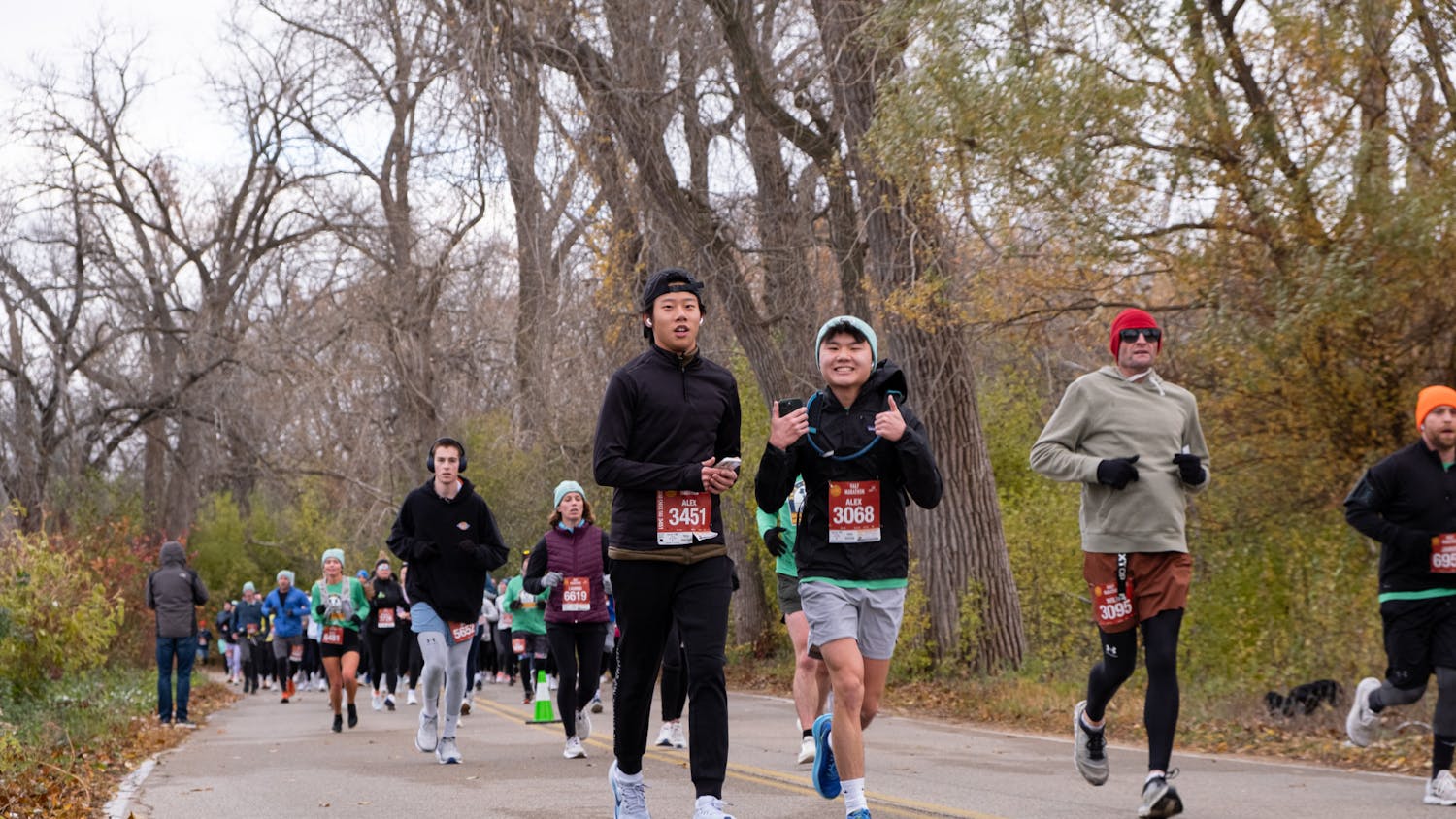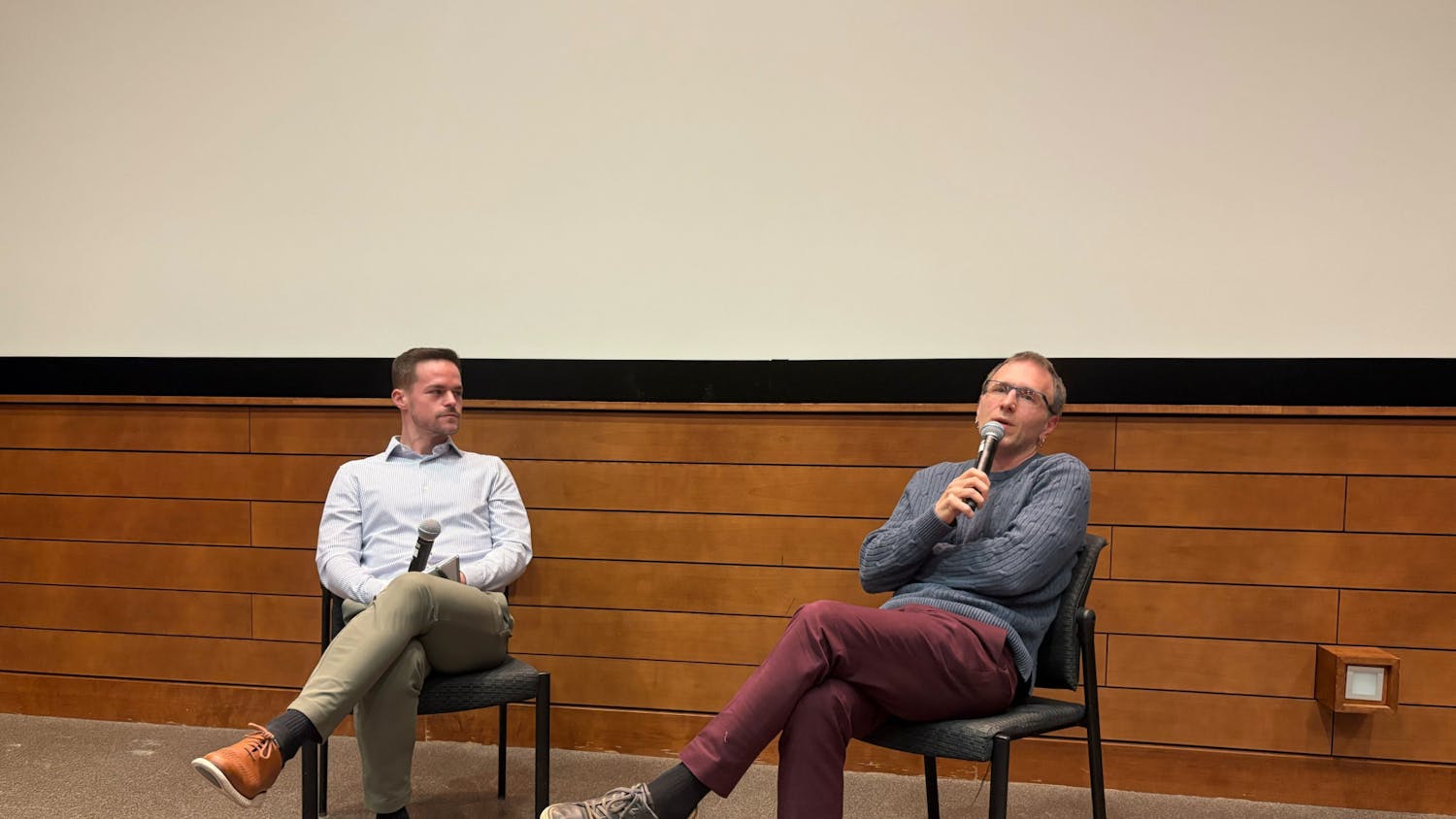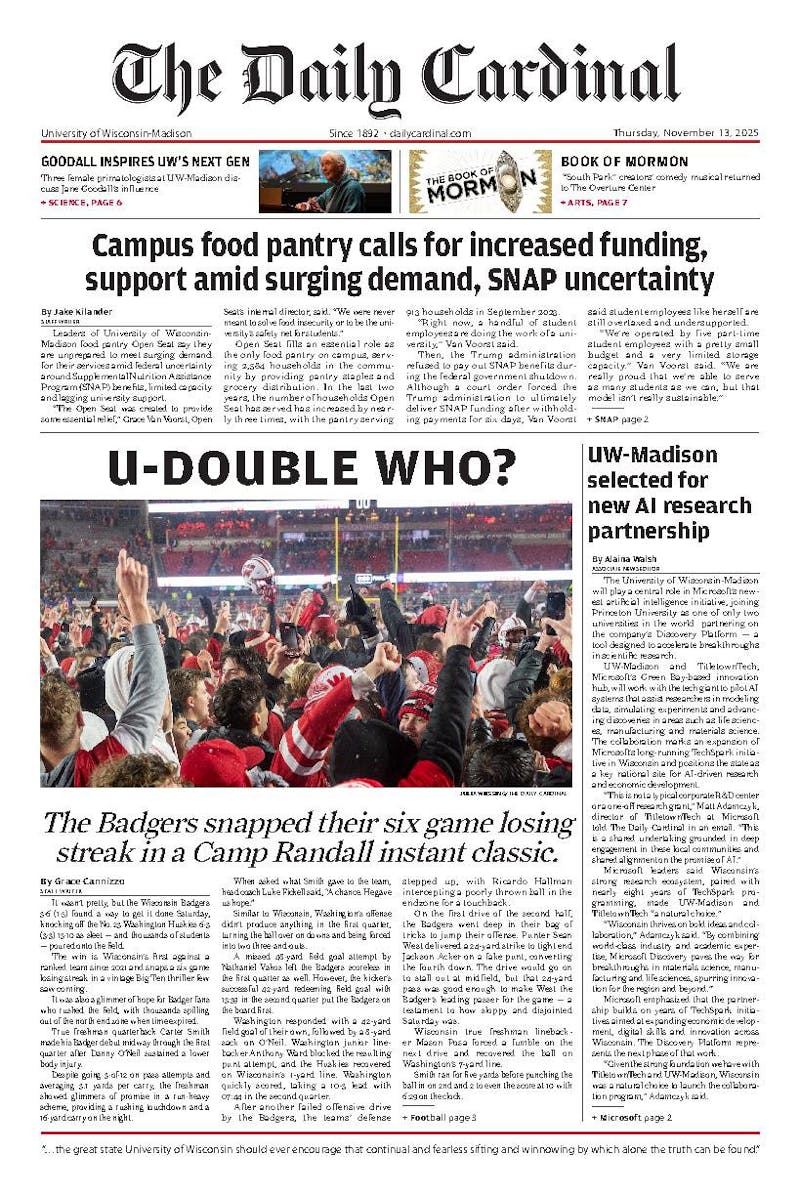Come football Saturdays, students and other Badger fans flood the memorial park east of Camp Randall stadium, ready for the football game.
But few are likely aware of the rich history that makes this site an important component of Madison and American history.
\[They] may notice the fact that there's a Civil War commemorative cannon and an arch; but I didn't [think about it] much when I was a student, and my grandfather and great grandfather trained there,"" said E. David Cronon, UW-Madison professor emeritus, who has written about the history of UW-Madison.
The 50-acre site was originally owned by the estate of William D. Bruen, who leased the land to the State Agricultural Society. The field served as a fairground with a racetrack and was then converted into the state's largest staging point, where more than 70,000 soldiers trained for the Civil War, according to the plaque that currently stands on the property. The training camp was named after Alexander W. Randall, Wisconsin's first wartime governor.
This location also included a hospital and a stockade for Confederate prisoners of war, many of whom died there. The prisoners are buried in ""Soldier's Rest,"" a cemetery on the west side of the city.
""Most people don't realize that prisoners of the Civil War were held so close to them, right here in Madison,"" said Daina Penkiunas, a member of the State Historical Society.
Most people do realize, of course, that today Camp Randall is where the Badger football team trains. The original plan was to divide the land into sections and sell them for building lots. Responding to the protests of war veterans, the state legislature bought the property in 1893. To honor veterans, six and a half acres of the area, complete with a memorial arch and cannons, have served as a memorial park since 1913.
The rest of the land has been utilized for athletic events. When the site became a football field, veterans protested the idea of changing the name of the area, so the state kept it as Camp Randall.
Athletic events at Camp Randall have continued to influence the lives of faculty and students. Justin Doherty, who works on the fourth floor of Camp Randall stadium, said he remembers ""the last game of 1999 season, when Ron Dayne broke the rushing record clinching the Big Ten title"" in a game against Iowa.
This weekend's game against the Minnesota Golden Gophers, the last home game of the year, in which the two teams compete for the Paul Bunyan Axe, the history of UW-Madison's football feud with Minnesota dates back more than 100 years.
Camp Randall hosted its first game, a victory against the Gophers, in 1895. The wooden bleachers, which only held 3,000 fans, were declared unsafe in 1914, so temporary bleachers replaced them.
As many as 15,000 spectators were watching the homecoming game against Minnesota in 1915 when the bleachers collapsed, bringing 1,800 fans crashing to the ground.
Hopefully only the Gophers will fall this weekend.





